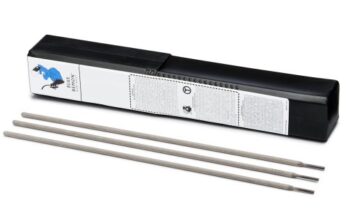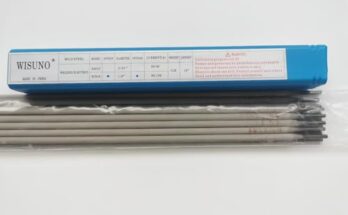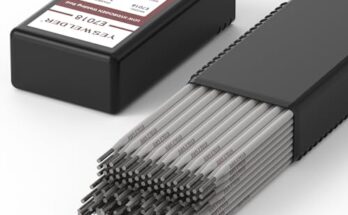Need to understand the world of welding? Choosing the right welding rods for ac welder is crucial for a successful weld. This guide will walk you through everything you need to know, from understanding different rod types to selecting the perfect one for your project. We’ll cover various aspects and even share some of my
own experiences to help you make an informed decision.
Understanding AC Welders and Their Requirements
What is an AC Welder?
AC welders, or alternating current welders, use an alternating current power supply to create the electric arc needed for welding. Unlike DC welders, the current flows in both directions, constantly reversing its polarity. This has implications for the type of welding rod you can use. The alternating current can be slightly more challenging to control for beginners due to the constantly shifting polarity, requiring a slightly different technique than with direct current. I remember my first attempts with an AC welder were a little rough around the edges, but mastering the technique is certainly achievable. With practice and the right rod, you’ll be making strong welds in no time.
Choosing the Right Welding Rods for AC
The key to successful welding with an AC welder lies in selecting the appropriate welding rod. The rod’s composition directly impacts its performance with alternating current. Some rods are specifically designed for AC welding, while others might not perform as well, leading to inconsistent welds or increased spatter. This is where understanding the different types of welding rods becomes crucial. We’ll delve deeper into the characteristics of several common rod types later in this guide. I’ve personally found that understanding the electrode’s coating is just as important as its core material when working with AC. A good coating provides stability and prevents the arc from being excessively affected by the polarity changes.
The Importance of Electrode Coating
The coating on a welding rod isn’t just there for aesthetics; it plays a vital role in the welding process. The coating, often referred to as flux, serves several crucial functions, including stabilizing the arc, shielding the weld pool from atmospheric contamination, and adding alloying elements to the weld metal. The composition of the flux is tailored to the specific type of welding rod and its intended application. For instance, a rod designed for welding mild steel in an outdoor environment might require a more robust flux than one used for welding thin sheet metal in a controlled setting. During my years of experience, I’ve observed firsthand how critical the quality and type of electrode coating is to a successful weld, especially when using an AC welder.
Types of Welding Rods for AC Welders
General Purpose Rods (E6011, E6013)
General-purpose rods, like E6011 and E6013, are excellent starting points for many AC welding projects. E6011 rods are known for their ability to weld in all positions, even overhead, thanks to their deep penetration and excellent arc stability. They are often preferred for outdoor use and dirty environments because the thick coating protects the weld pool from contamination. The E6013, conversely, offers better arc stability and a smoother weld bead, making it slightly easier to control and more forgiving for beginners. In many of my early projects, I found the E6013 to be a more manageable option due to its enhanced arc stability, allowing me to focus on refining my welding technique. However, both offer versatility in terms of materials they can weld, including mild steel and other common metals. Both are routinely used in automotive repairs and general fabrication work.
Low Hydrogen Rods (E7018)
Low hydrogen rods, such as E7018, are specifically designed for applications requiring high-strength welds with minimal porosity. The low hydrogen content in these rods significantly reduces the risk of hydrogen cracking, a common problem in high-strength steel welds. These rods often require a preheating process to achieve optimal results, and their performance depends on proper drying and storage. The preheating step is crucial to reduce the moisture content of the electrode coating before use. Proper handling and preheating are absolute musts to avoid common flaws and inconsistencies. These rods are a common sight in high-pressure applications like pipelines or large industrial projects.
Stainless Steel Welding Rods (308L, 309L)
Welding stainless steel requires specific rods designed for the job. Popular choices include 308L and 309L. These rods are formulated to create welds that match the corrosion resistance and properties of the base stainless steel material. They generally require a higher level of skill and precision compared to mild steel rods because of the heat sensitivity of stainless steel. I’ve personally learned the importance of controlling the heat input when welding stainless steel; excessive heat can cause warping and discoloration. Proper preparation of the stainless steel base metal is also crucial for a strong and clean weld.
Factors Affecting Rod Selection for AC Welding
Material Type
The type of metal you’re welding is the primary factor determining the welding rod. Mild steel, stainless steel, aluminum, and cast iron each require rods with different compositions and flux characteristics. Using the wrong rod on the wrong material leads to weak, brittle welds that can compromise the structural integrity of your project. For instance, using a mild steel rod on stainless steel will create a weld that is not only structurally unsound but also more susceptible to corrosion.
Weld Thickness
The thickness of the metal being welded significantly influences rod selection. Thicker materials require rods capable of deep penetration, while thinner materials might need rods with a gentler arc to avoid burn-through. In my experience, using the correct rod diameter is essential for controlling heat input. Too large of a diameter on thin metal will result in a burn-through while too thin of a rod will not provide sufficient penetration on thick stock. This is often overlooked, but a key element to ensure welding quality and efficiency.
Welding Position
The position in which you’re welding also matters. Some rods excel at vertical and overhead welding due to their superior arc stability and penetration capabilities. Overhead welding, in particular, requires specialized rods that can resist gravity and maintain a consistent weld pool. I’ve found that flat and horizontal welds generally offer more forgiving conditions for beginners. However, mastering other positions enhances your overall welding skills.
Understanding Welding Rod Specifications
Decoding Welding Rod Numbers
Welding rods are identified by a series of numbers and letters that provide crucial information about their properties. Understanding these specifications is crucial for selecting the right rod for your project. For example, the E6011 designation indicates: E denotes electrode; 60 refers to tensile strength; and 11 specifies the type of coating and its characteristics. These specifications guide welders in selecting rods based on their specific project needs and requirements. Learning to interpret these codes is key to becoming a more proficient welder.
Tensile Strength and Other Properties
The tensile strength is a key characteristic of a welding rod, indicating the strength of the resulting weld. Higher tensile strength typically implies a stronger and more durable weld. Other important properties include impact resistance, ductility, and fatigue strength. These properties directly influence the weld’s overall performance under stress and various conditions. Choosing a rod with appropriate properties for the intended application is vital for the success and longevity of any welded structure.
Proper Storage and Handling
Welding rods require proper storage to maintain their performance. Moisture is the enemy of many welding rods, especially low hydrogen rods. Improper storage can compromise the weld’s quality and increase the risk of defects. Low hydrogen rods should be stored in a controlled environment to prevent moisture absorption. I’ve always emphasized proper storage in my own work, maintaining a dry cabinet to ensure my rods maintain their intended properties and to avoid unnecessary welding issues.
Common Problems and Troubleshooting
Porosity and Inclusion
Porosity, or the presence of small holes in the weld, is a common issue that can be caused by factors like moisture contamination, insufficient shielding gas (for some processes), or improper welding technique. Inclusions refer to foreign materials trapped within the weld. Identifying and addressing these issues is crucial for ensuring the structural integrity of your welds. Understanding the root causes of such issues greatly aids in finding solutions and preventing future occurrences.
Cracking and Distortion
Weld cracking can be caused by various factors, including residual stresses in the weld metal, excessive heat input, or hydrogen embrittlement. Distortion is another common issue, resulting in the deformation of the base material during welding. Controlling heat input, preheating (when necessary), and proper post-weld heat treatment (if applicable) can help prevent cracking and distortion. These defects can be costly to fix, underlining the importance of selecting the appropriate rod and implementing proper welding techniques.
Spatter and Arc Instability
Excessive spatter can make a weld messy and difficult to clean up. Arc instability leads to inconsistent welds and can sometimes cause burn-through. These issues can result from improper rod selection, insufficient amperage, or poor welding technique. Adjusting amperage, maintaining consistent arc length, and ensuring proper shielding gas can greatly improve weld quality and reduce spatter. Maintaining the right technique will ultimately result in better welds.
Advanced Considerations for AC Welding
AC vs. DC Welding
AC and DC welders differ in their power supply and characteristics. AC welders are often simpler and less expensive than DC welders, but they might require more skill to achieve the same weld quality. DC welders provide greater control over penetration and arc characteristics. The choice between AC and DC depends on specific application needs and personal preferences. Many welders find that mastering both types of welding enhances their overall skillset and adaptability.
Different Welding Techniques
Different welding techniques, such as stringer beads, weaving, and stitch welding, can impact weld quality and appearance. Mastering these techniques is key to achieving consistent and high-quality welds. Experimentation and practice are key to finding techniques that best suit an individual’s style and the specific application. The choice of technique depends on the project’s complexity and desired weld characteristics.
Safety Precautions
Safety should always be a top priority when welding. This includes wearing appropriate personal protective equipment (PPE), such as a welding helmet, gloves, and clothing, along with proper ventilation to avoid inhaling hazardous fumes. Understanding and implementing all safety standards is vital, especially in industrial environments or large-scale projects. This is not just to avoid personal injury, but to protect others involved in the process.
Frequently Asked Questions
What are the best welding rods for AC welders for beginners?
For beginners, E6013 rods are often recommended. Their forgiving arc and ease of use make them ideal for learning the fundamentals of AC welding. They offer a smoother arc and produce a less spattery weld, leading to a better learning experience.
What type of welding rods are best for outdoor welding with an AC welder?
E6011 rods are excellent for outdoor welding because of their robust coating, which helps shield the weld pool from wind and contaminants. Their ability to create a strong weld even in less-than-ideal conditions is a key advantage in outdoor settings. Learn more about the specific characteristics of E6011 welding rods.
Can I use DC welding rods with an AC welder?
While you can sometimes get away with it, it’s generally not recommended. DC rods are designed for the specific characteristics of a DC arc, and using them with an AC welder may result in inconsistent welds, increased spatter, and reduced overall quality. Always use rods specifically designed for AC welding to ensure optimal performance and weld quality.
How do I store welding rods properly?
Store welding rods in a cool, dry place to prevent moisture absorption. Low-hydrogen rods require even more careful storage, often in sealed containers or desiccators to maintain their low hydrogen content and avoid potential weld defects.
What is the difference between E6010 and E6011 welding rods?
Both E6010 and E6011 are designed for AC welding, but E6011 is more versatile and suitable for use in all welding positions, while E6010 is typically better suited for downhand or flat welding applications. E6011 is known for its superior stability, making it a preferred choice for beginners.
What are the common causes of porosity in AC welding?
Porosity can stem from moisture in the rod, insufficient shielding (if applicable), improper welding technique, or contamination of the weld puddle. Addressing these issues, from selecting properly dried rods to improving technique, is critical to mitigate porosity.
What should I do if my AC welder arc is unstable?
Arc instability could be due to several factors – improper amperage settings, wrong rod selection, dirty or damaged electrodes, or poor electrode-to-workpiece contact. Experiment with adjusting your settings and always inspect the equipment before beginning your task.
Final Thoughts
Choosing the right welding rods for ac welder is crucial for success. This guide has covered various aspects, from understanding different rod types and their specifications to troubleshooting common issues. Remember that practice and experience are invaluable. Don’t be afraid to experiment (safely!), and always prioritize safety. By understanding the fundamentals and practicing consistently, you can become a proficient AC welder capable of creating strong, reliable welds for a variety of projects. With the right knowledge and technique, you’ll find the process both rewarding and efficient. Now go out there and start welding!


